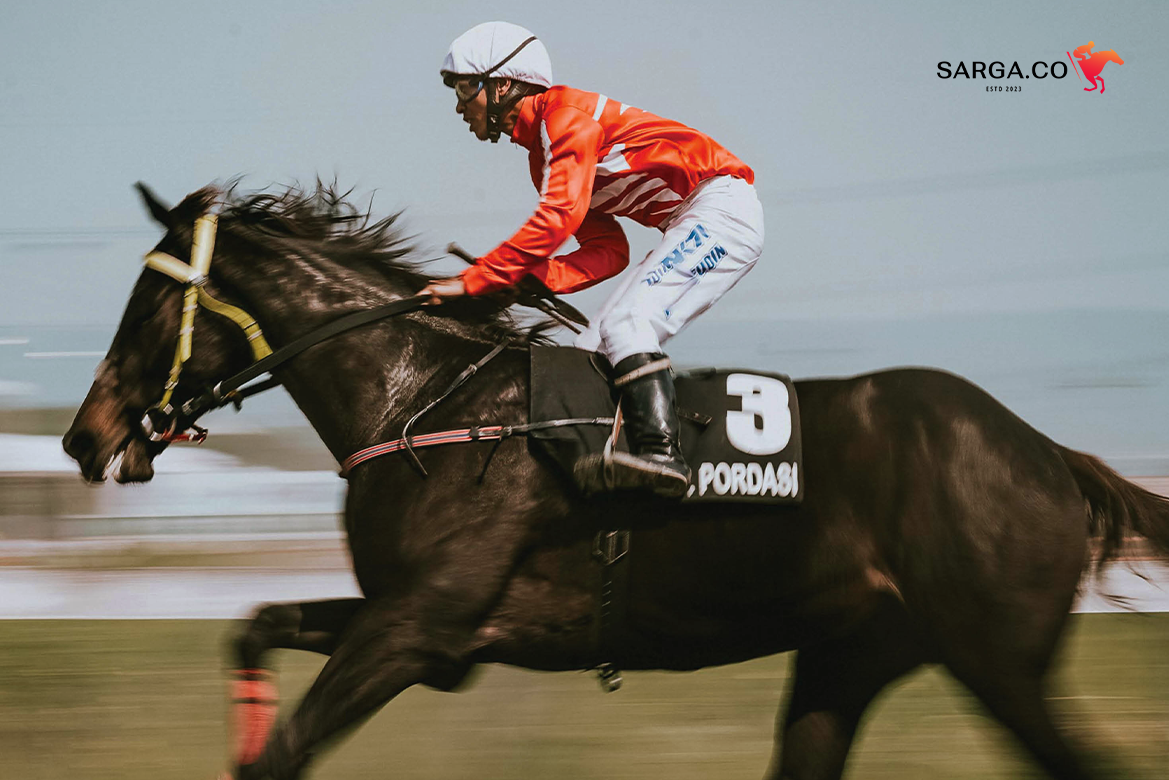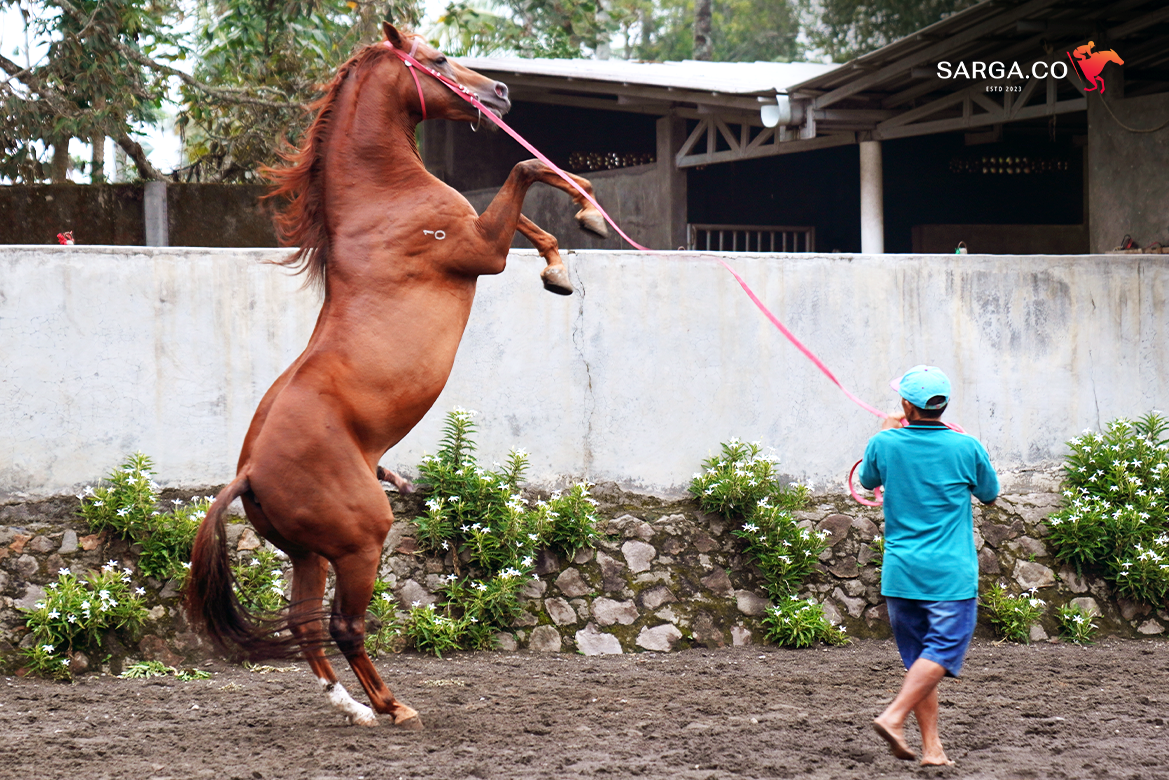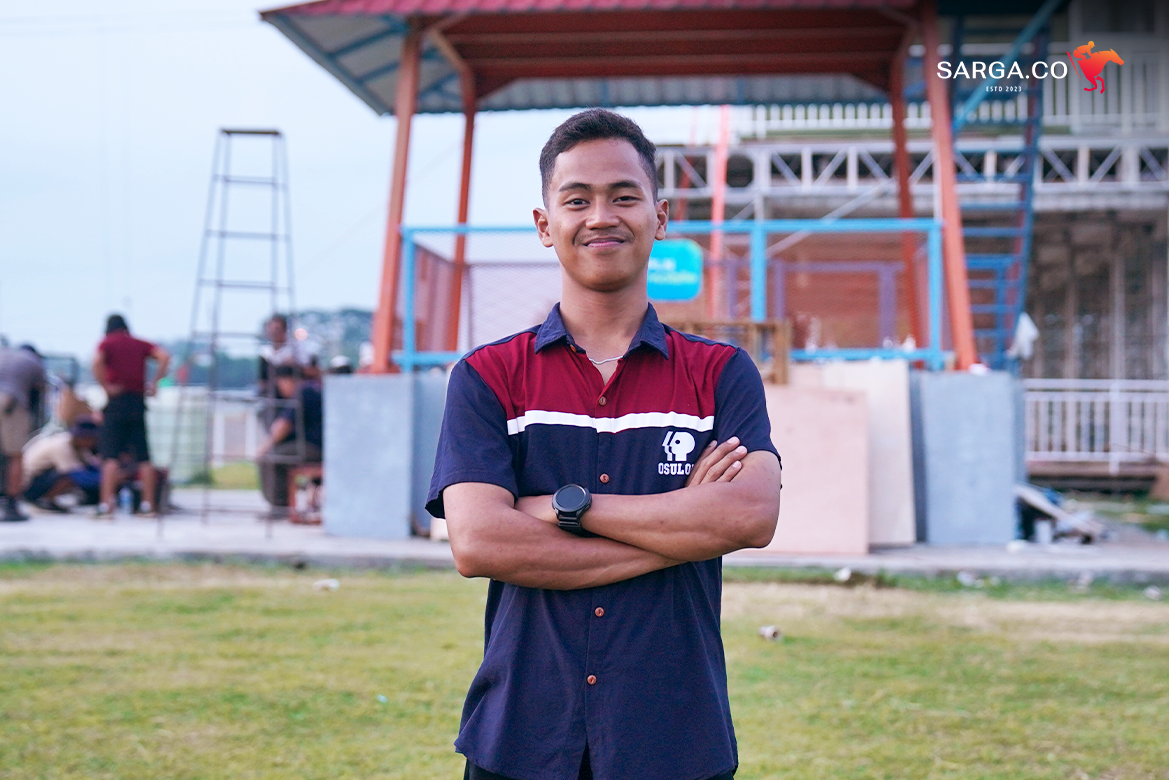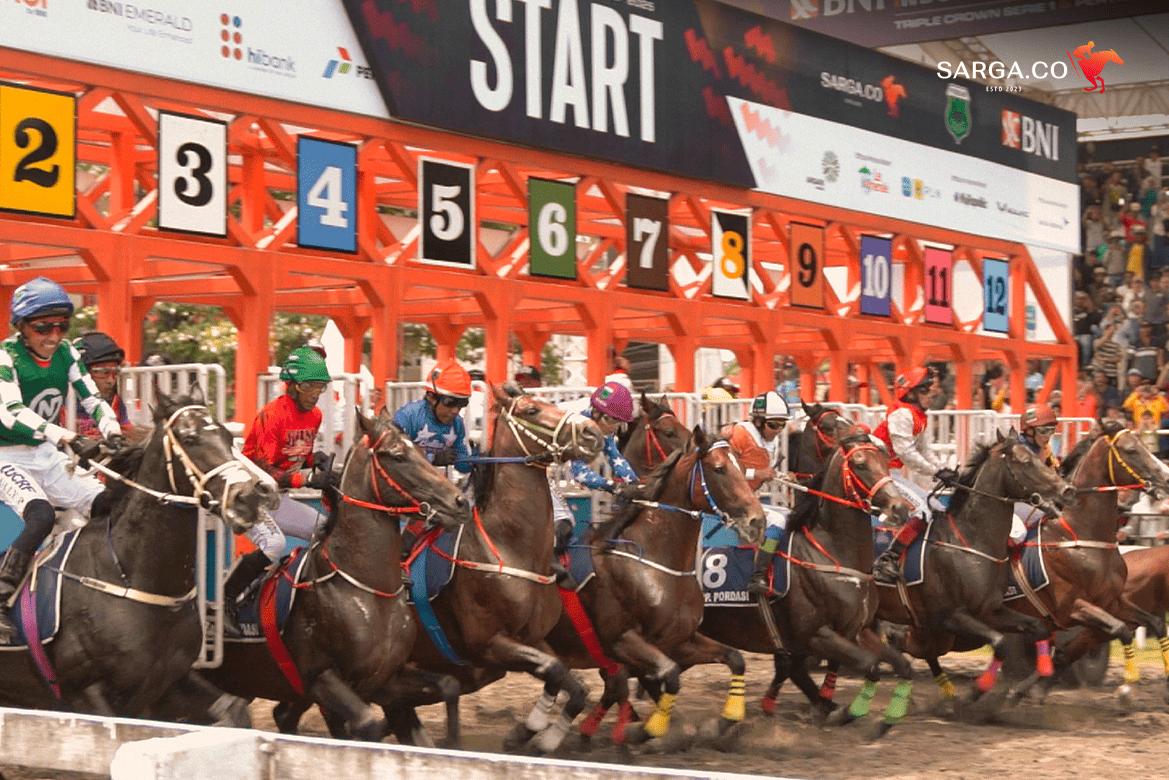SARGA.CO—Horses or Equus Caballus have long coexisted with humans, serving economic and historical purposes as sources of strength, speed, or consumption. They are widely utilized in horse racing, as pets, and as a means of transporting people and goods.
The price of a racehorse varies depending on its breed and several influencing factors, ranging from millions to billions of rupiah. This article explores the characteristics that determine the price of racehorses and provides an overview of the market in Indonesia.
Types of racehorses
According to research conducted by Prihandini, A. & Umami, M. (2021) on “Ethnozoological Study of the History of Using Horse Statues (Equus Caballus) as Icons of Kuningan City, Indonesia,” all horses in Indonesia fall under the pony type, with a shoulder height of less than 140 cm. These horses are believed to be descendants of Mongolian (Przewalski) and Arabian horses.
Indonesia is home to 13 recognized local horse breeds, including the Makassar horse, Gorontalo and Minahasa horses, the Sumatra horse (which consists of four subtypes: Padang, Gayo, Batak, and Agam), the Sumba or Sandelwood horse, the Sumbawa horse, the Bima horse, the Flores horse, the Sabu horse, the Rote horse, the Timor horse, the Bali horse, the Lombok horse, and the Kuningan horse.
The horse breeding industry in Indonesia has been expanding, with local horses being crossbred with Thoroughbred stallions. A study by Berlina (2007) titled “Ovarian Dynamics in Horses Resulting from Crossbreeding Thoroughbred Stallions with Indonesian Local Mares” highlights that racehorses’ competitive lifespans are limited, leading many female horses to be used for breeding after retiring from racing.
The breeding of Indonesian local horses with Thoroughbred stallions is restricted to the third (G3) and fourth (G4) generations. After this, further breeding is conducted within the same generation, such as G3 with G3, G3 with G4, and G4 with G4, ultimately producing.
Thoroughbred horses, or THB, originate from England, Turkey, and Arabia and are widely used in racing due to their exceptional speed, endurance, agility, and sensitivity.
Factors influencing the price of racehorses

Thoroughbred horse race
Sumber: SARGA.CO
Racehorses are now seen as promising business investments. Their value is determined by body weight, lineage, and competition achievements, making their price significantly higher than that of horses bred solely for farming or leisure.
According to research conducted by Irhamdi (2024) titled “Feasibility Analysis of Local Indonesian Horse Breeding with Thoroughbred Crossbreeding at Avatar Stable, Belangbebangka, Pegasing District, Central Aceh,” several key factors influence the price of racehorses. The first factor is physical strength, speed, and endurance, as a well-built and resilient horse is more desirable.
The second factor is competition achievements, with racehorses with a strong winning record being more sought after. The third factor is the horse’s color. Uniquely colored horses tend to attract more buyers, as their aesthetic appeal plays a significant role in desirability. Lastly, size is an essential determinant, as buyers look for horses with an ideal weight based on their race class.
For instance, ponies typically weigh between 250 and 400 kg, while racehorses weigh around 400–600 kg, making their build crucial for achieving top performance. Other aspects that impact a horse’s market value include labor costs, daily maintenance expenses such as feed and vitamins, and demand and competition in the racehorse market.
The price range of racehorses
The general price range for racehorses varies from IDR 20 million to 150 million, depending on the sale location and other contributing factors. Horses can be purchased for a few million rupiah in Sumba, East Nusa Tenggara (NTT). In contrast, in Jeneponto, South Sulawesi, horses are often sold for tens of millions or more, depending on their age, breed, and overall quality.
Racehorses with a prestigious lineage and a history of victories are typically valued between IDR 200 million to 500 million. If a horse has secured multiple wins in prestigious races, its price can soar dramatically, exceeding IDR 2 billion. Imported Thoroughbred racehorses with elite genetics can even reach IDR 5 billion or more.
Essential considerations before buying a racehorse
According to an article from HuB Indonesia, several crucial factors should be considered when purchasing a racehorse. First, a veterinarian must thoroughly examine the horse’s health to ensure it is in optimal condition.
Second, checking the horse’s lineage is essential to confirm its quality and racing potential. Third, the horse must be well-trained and have a temperament that suits the buyer’s needs. Fourth, legal documentation, including pedigree certificates and health permits, must be verified to avoid future issues. Lastly, conducting proper research and seeking recommendations from experienced horse trainers or owners can help ensure a well-informed purchase.
Racehorses as a future investment
Owning a racehorse can be a significant investment, particularly if the horse has the potential to excel in prestigious competitions. Racehorse prices in Indonesia fluctuate based on bloodline, age, and performance, making the market dynamic and highly competitive.
By understanding the pricing range and key influencing factors, prospective buyers can make well-informed decisions that align with their goals.
For those considering entering the exciting world of horse racing, careful evaluation and thorough research are essential before purchasing. Choosing the right horse requires understanding its background, capabilities, and overall value.
Investing in a racehorse can lead to long-term success in the industry with proper planning and the right selection.




